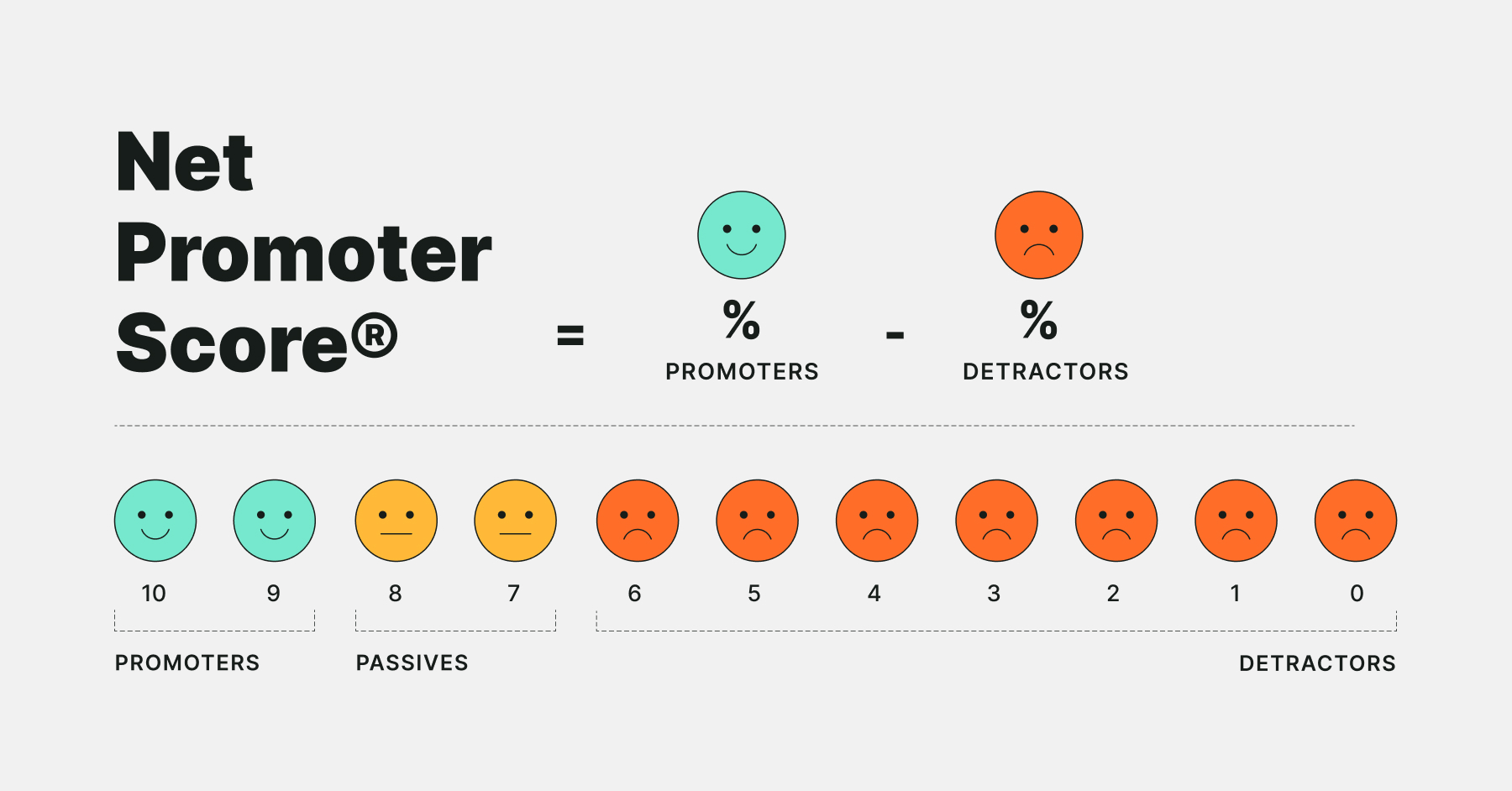The Net Promoter Score analysis, or NPS, is one of the most widely used metrics to measure customer loyalty and satisfaction. It’s a simple way to ask customers, “How likely are you to recommend our business to others?” Based on the responses, companies can identify loyal fans, indifferent users, or dissatisfied customers. But why is this important? Well, loyal customers drive repeat business and positive word-of-mouth, both of which are invaluable for growth.
Understanding the Components of Net Promoter Score Analysis

How NPS is Calculated
NPS categorizes respondents into three groups:
- Promoters (score of 9-10): Loyal enthusiasts who fuel growth through referrals.
- Passives (score of 7-8): Satisfied but unenthusiastic customers.
- Detractors (score of 0-6): Unhappy customers who could harm your brand through negative feedback.
The Three Types of Respondents: Promoters, Passives, and Detractors
Each group offers valuable insights. Promoters are your brand advocates, Passives are neutral, and Detractors point to potential issues needing attention.
The Formula for Calculating NPS
- Calculating NPS is straightforward:
- NPS=%Promoters−%Detractors\text{NPS} = \% \text{Promoters} – \% \text{Detractors}
- For instance, if 60% of respondents are Promoters, 20% are Detractors, and 20% are Passives, the NPS would be 40.
Why Net Promoter Score Analysis Matters for Businesses
NPS as a Predictor of Customer Loyalty
A high NPS indicates strong customer loyalty, while a low NPS can highlight areas needing improvement. NPS is considered a reliable predictor of customer retention and overall loyalty.
Impact of NPS on Revenue and Growth
A good NPS correlates with increased revenue, as happy customers are more likely to make repeat purchases and recommend your business to others, contributing to growth.
Types of Net Promoter Score Analysis
Transactional NPS vs. Relationship NPS
- Transactional NPS: Gathers feedback right after a specific interaction.
- Relationship NPS: Measures overall brand perception periodically.
Each type serves different objectives, helping businesses get a complete picture of customer sentiment.
Collecting NPS Data
Best Practices for Surveying Customers
To get the most accurate data, surveys should be short, anonymous, and conducted at the right time. Timing can greatly impact the accuracy of your NPS results.
Tools for Conducting NPS Surveys
Many tools like SurveyMonkey, AIM Research, and dedicated NPS software make it easy to survey customers and gather insights. These tools also provide analytics features for deeper data exploration.
Analyzing NPS Results
Interpreting NPS Scores
Analyzing your NPS means more than just looking at the number. It’s about understanding why customers feel the way they do. Promoters’ responses often reveal what you’re doing right, while Detractors’ feedback uncovers opportunities for improvement.
Identifying Trends and Patterns
Analyzing trends over time helps businesses see if changes are impacting customer loyalty. Watching how NPS scores change after adjustments can offer valuable insights into the effectiveness of new strategies.
Using NPS to Drive Customer Experience Improvements
Leveraging Feedback from Promoters
Promoters offer feedback on what’s working. Leveraging their positive comments can help you double down on what customers love.
Addressing Concerns from Detractors
Detractors provide insights into what might be driving customers away. Addressing their feedback is crucial to enhancing customer satisfaction and improving future NPS scores.
Benchmarking NPS Across Industries
Industry Averages and Standards
NPS scores can vary significantly by industry. Comparing your NPS with industry averages helps in setting realistic targets and expectations.
How to Compare Your NPS Score Effectively
Comparing NPS scores with your industry can help you understand how well you stack up against competitors and identify areas of improvement.
Challenges
Common Pitfalls in NPS Surveys
Certain pitfalls, like survey fatigue or poorly timed questions, can skew NPS data. It’s important to consider these factors to ensure the most accurate results.
How to Avoid Bias in Responses
Avoiding bias in your NPS surveys is crucial for getting genuine feedback. This involves careful question phrasing and proper timing of surveys.
Advanced Net Promoter Score Analysis Techniques
Segmenting NPS by Customer Demographics
Segmenting NPS by factors like age, location, or purchase history can reveal deeper insights into customer loyalty across different customer types.
Using NPS in Predictive Analytics
Predictive analytics allows businesses to use past NPS scores to predict future loyalty and retention rates, enabling proactive improvement strategies.
Connecting Net Promoter Score Analysis to Business KPIs
Aligning NPS with Customer Satisfaction (CSAT)
NPS should be analyzed alongside other metrics like CSAT to gain a holistic understanding of customer satisfaction.
Integrating NPS into Overall Business Metrics
Incorporating NPS into your key business metrics helps align customer feedback with broader business goals.
Implementing Changes Based on NPS Insights
Steps to Turn NPS Feedback into Action
Identifying actionable steps based on NPS feedback is essential. Focus on implementing changes that address both Promoter and Detractor feedback.
How NPS Drives Continuous Improvement
NPS offers a continual loop of feedback and improvement, allowing businesses to consistently evolve based on customer insights.
Case Studies of Successful NPS Implementation
Example 1: A Retail Giant
A retail company improved customer loyalty by enhancing product quality based on NPS feedback.
Example 2: A Technology Firm
A tech company boosted its NPS by addressing common customer pain points, ultimately enhancing overall satisfaction.
Conclusion
NPS is an invaluable metric for understanding customer loyalty and improving business growth. By analyzing feedback, addressing concerns, and leveraging insights from Promoters, businesses can create a customer-centered approach that fuels long-term success.
If you’re ready to transform your customer feedback into actionable insights, consider requesting a demo from AIM Technologies today. Discover how their advanced analytics solutions can elevate your business strategy and drive meaningful growth through enhanced customer loyalty.




